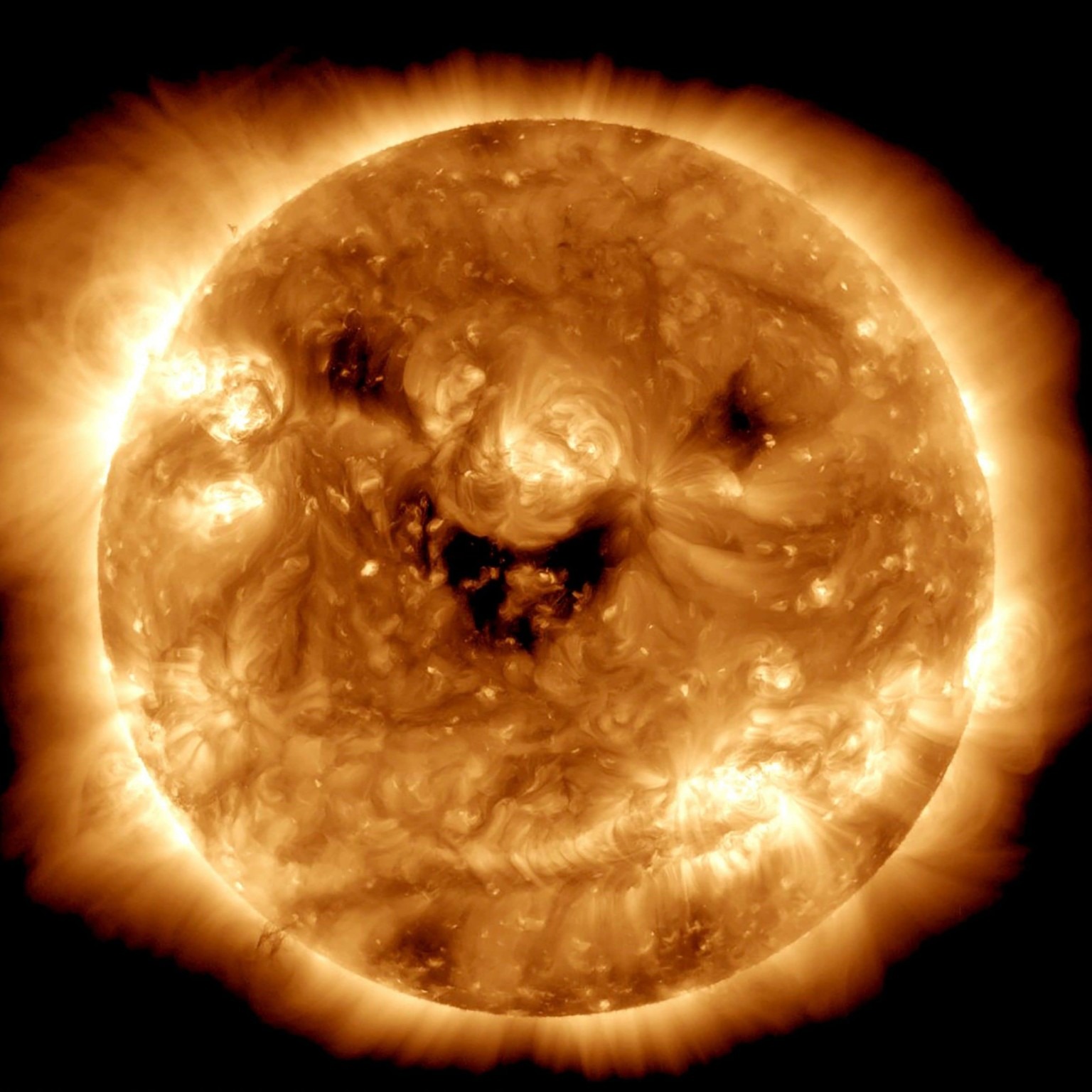It seems that our star takes the phrase “The sun smiles at us” too literally. NASA’s Solar Dynamics Observatory (SDO) has made a funny portrait of the Sun, in which our luminary looks like it has two dark eyes, a round nose and a happy smile.

“Watch the birdie! Today, NASA’s Solar Dynamics Observatory recorded the “smile” of the Sun. These dark spots, which are visible in ultraviolet light, are areas where the fast solar wind bursts into space,” NASA commented on the image.
The Council of Scientific and Technological Institutions of Great Britain intervened with a revised version of the image that turns it into a pumpkin for the Halloween holiday, which is now in full swing.
Fixed it pic.twitter.com/hDiWB8Uar0
— ???? Science and Technology Facilities Council ???? (@STFC_Matters) October 27, 2022
SDO Observations
SDO was launched in 2010 and since then it has been constantly in space and watching the activity of the Sun. The observatory is used to study space weather and track star flares. NASA SDO photographs the sun every 12 seconds in 10 different wavelengths of ultraviolet light. Almost every day in 2022, there were flares and coronal mass ejections on the Sun.
These dark areas in the outer atmosphere emit charged particles that can cause geomagnetic storms when they reach Earth. Such space weather poses a threat to the functioning of our orbiting satellites.
Sunny threat in a smile
Putting aside the phenomenon of pareidolia, which is a feature of the human subconscious to distinguish in the patterns of the face where there are none. A smiling face actually poses a certain danger to the Earth, since these areas send a powerful stream of solar wind. There is a possibility that a strong solar storm may hit the Earth one of these days due to the flow of charged particles emanating from this “smile”.
The danger of solar winds hitting the Earth’s magnetosphere includes damage to radio networks and GPS interference, which can lead to disruptions in people’s daily work.
Earlier we reported about 12 interesting facts about the Sun.
Follow us on Twitter to get the most interesting space news in time
https://twitter.com/ust_magazine
